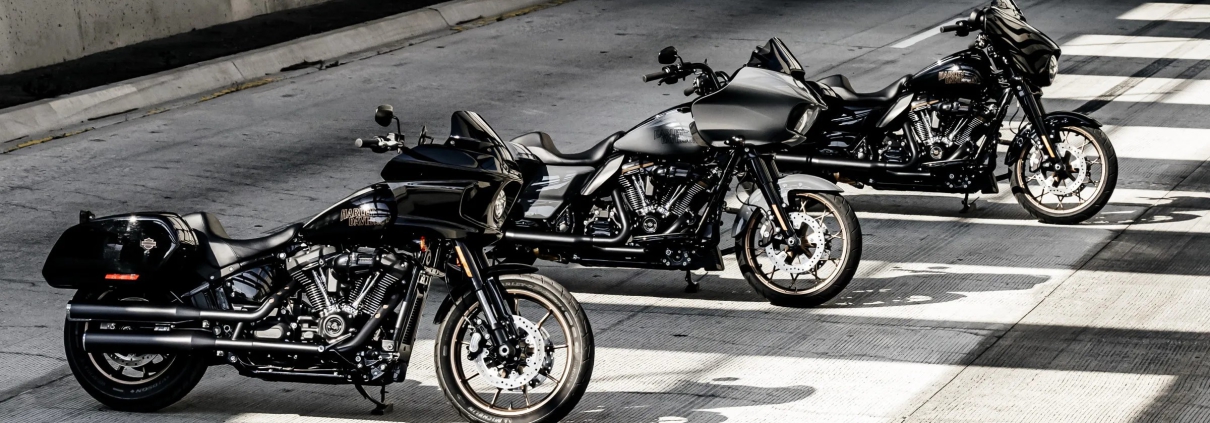Harley Motorcycle Battery Upgrade Trends in 2025: Smarter Choices for Power and Performance
- Introduction: A New Era for Harley Motorcycle Power Systems
Few brands embody the spirit of American engineering like Harley-Davidson. But even the most iconic machines are evolving — and at the heart of this transformation lies one critical component: the motorcycle battery.
As Harley models integrate more electronic control units (ECUs), infotainment systems, and security modules, power stability and reliability have become more important than ever. Traditional batteries that once powered simple ignition systems are now being pushed beyond their design limits.
In 2025, the market is clearly shifting. Lithium motorcycle batteries are no longer niche; they are rapidly becoming the new standard for riders and service professionals who value performance, longevity, and ease of maintenance. Let’s look at what’s driving this evolution — and how it’s changing the way Harley motorcycles are powered, sold, and maintained.
- The Problem with Conventional Batteries
For decades, most Harley-Davidson motorcycles relied on lead-acid or AGM (Absorbed Glass Mat) batteries. While they have proven dependable, their limitations are increasingly evident in modern riding conditions.
- Weight and space inefficiency: Lead-acid batteries can weigh up to 18–20 lbs, directly affecting bike balance and fuel efficiency.
- Maintenance issues: AGM batteries require careful charging and storage to prevent sulfation, a leading cause of premature failure.
- Inventory complexity: Dealers and workshops often manage multiple SKUs for different Harley models, increasing storage costs.
- High warranty and return rates: Frequent replacements due to self-discharge or poor maintenance eat into profits.
As Harley riders seek smoother startups, stronger electrical performance, and maintenance-free reliability, the old chemistry simply struggles to keep up.
- Why Lithium Is Redefining the Harley Battery Market
Lithium technology is not just a new chemistry — it represents a fundamental change in how motorcycle batteries are designed and managed. For Harley-Davidson applications, lithium batteries solve nearly every operational pain point faced by dealers, riders, and service centers.
Key advantages include:
- Lighter and more compact: Up to 70% lighter than lead-acid, improving handling and acceleration.
- High cranking power: Delivers consistent starting performance even in cold or hot weather, ideal for large V-Twin engines.
- Faster charging: Can reach 80–90% charge within minutes, reducing downtime in busy service operations.
- Longer life cycle: Lasts up to five times longer than conventional batteries, lowering total ownership costs.
- Built-in battery management system (BMS): Monitors voltage, temperature, and current to prevent overcharging or deep discharge — critical for reliability and safety.
💡 Discover our dedicated 12V lithium motorcycle battery range designed for Harley applications:
https://leochlithium.us/12v-motocycle-starts-lithium-battery-2/
For workshops and distributors, these advantages translate into lower inventory turnover, reduced warranty claims, and better customer satisfaction.
- Compatibility Simplified: One Battery for Multiple Harley Models
One of the biggest challenges in the Harley aftermarket is model-specific compatibility. Harley’s diverse lineup — from the Sportster to the Softail and Touring series — traditionally required different battery specifications.
However, modern lithium batteries have simplified this process. Many premium units are built with universal fitment in mind, supporting multiple Harley platforms through modular sizing and adaptive terminals. This allows businesses to reduce the number of SKUs while improving availability and installation speed.
Recommended compatibility strategy:
- Standardize around 12V, 18–24Ah lithium batteries for most modern Harleys.
- Use models with modular spacer kits to fit both smaller and larger battery trays.
- Select units with built-in voltage protection for vehicles equipped with advanced onboard electronics.
📘 Further Reading:
Understanding Harley-Davidson Motorcycle Battery Voltage: A Complete Guide for Owners and Professionals
This compatibility flexibility helps distributors manage a leaner, smarter inventory — while workshops spend less time verifying fitment and more time serving customers.
- The Business Angle: Faster Turnover and Better Customer Retention
The shift toward lithium isn’t just a technical upgrade — it’s a business opportunity. For repair shops, resellers, and distributors, battery replacement is no longer a low-margin service but a value-driven upgrade.
How lithium boosts profitability:
- Premium upsell potential: Lithium batteries command higher margins with proven performance benefits.
- Reduced warranty claims: Extended life means fewer returns and service calls.
- Customer loyalty: Riders who experience improved cold starts and longer runtime often return for additional accessories or upgrades.
- Cross-selling: Bundling lithium batteries with chargers or monitoring devices enhances overall sales volume.
Moreover, the “fit-and-forget” nature of lithium batteries allows dealers to focus on higher-value services instead of repetitive replacements.
📘 Further Reading:
Batteries for Harley Motorcycles: Choosing the Right Power for Your Ride
- Conclusion: Smarter Battery Choices Shape the Future of Harley Riding
The motorcycle industry is entering an era of smarter energy management — and Harley-Davidson, with its legacy of innovation, is part of that evolution. As lithium technology becomes mainstream, both riders and service professionals stand to benefit from a more reliable, efficient, and future-ready power system.
For businesses, the opportunity is clear: switching to lithium means not only better performance on the road but also better performance in the marketplace.
In 2025 and beyond, the Harley motorcycle battery is no longer just a component — it’s a statement of quality, intelligence, and progress.


